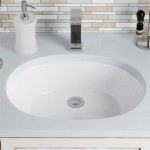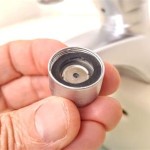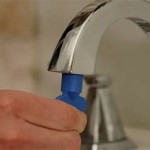Installing a Delta Bathroom Faucet: A Comprehensive Guide
Upgrading a bathroom faucet is a common home improvement project that can significantly enhance the aesthetic appeal and functionality of a bathroom. Delta faucets are widely recognized for their quality, durability, and design. This article provides a comprehensive guide to installing a Delta bathroom faucet, covering the necessary tools, preparatory steps, the installation process itself, and essential post-installation checks.
Preparing for the Installation: Gathering Tools and Assessing the Existing Setup
Before commencing the installation process, it is crucial to assemble the necessary tools and thoroughly assess the existing plumbing configuration. This proactive approach minimizes potential complications and ensures a smooth and efficient installation.
Tools Required: The following tools are typically required for a standard Delta bathroom faucet installation:
- Adjustable wrench: For tightening and loosening connections.
- Basin wrench: Designed to reach tight spaces under the sink.
- Plumber's tape (Teflon tape): To create watertight seals.
- Putty knife or scraper: To remove old plumber's putty or caulk.
- Pliers: For gripping and manipulating small parts.
- Screwdrivers (Phillips and flathead): For various screw types.
- Clean rags or towels: For cleaning up spills and drying surfaces.
- Bucket: To catch residual water from the water supply lines.
- Safety glasses: To protect eyes from debris.
- Work gloves: To protect hands.
- Flashlight or work light: To improve visibility under the sink.
Assessing the Existing Setup: Prior to removing the old faucet, carefully examine the existing plumbing connections. Note the type of connections used (e.g., compression fittings, threaded pipes) and their condition. Identify the hot and cold water supply lines and their shut-off valves. If the shut-off valves are corroded or malfunctioning, consider replacing them before proceeding with the faucet installation. This will prevent potential leaks and ensure a reliable water supply.
Safety Precautions: Before starting any plumbing work, it is imperative to turn off the water supply to the faucet. Locate the shut-off valves under the sink or, if necessary, turn off the main water supply to the house. After shutting off the water, open the existing faucet to relieve any remaining pressure in the lines. Place a bucket under the sink to catch any residual water.
Removing the Old Faucet: A Step-by-Step Approach
The removal of the old faucet requires a systematic approach to avoid damaging the sink or plumbing. Follow these steps carefully to ensure a clean removal.
Disconnecting the Water Supply Lines: Using an adjustable wrench, carefully disconnect the hot and cold water supply lines from the existing faucet. Have a bucket ready to catch any remaining water in the lines. If the connections are particularly tight or corroded, use penetrating oil to loosen them. Be cautious not to damage the supply lines during disconnection. If the supply lines are old or damaged, consider replacing them with new ones to prevent leaks.
Loosening the Mounting Nuts: The old faucet is typically secured to the sink with mounting nuts located underneath the sink. Use a basin wrench to loosen these nuts. Basin wrenches are designed to reach into the tight spaces under the sink and provide leverage for loosening the nuts. If the nuts are heavily corroded, penetrating oil may be required. In some cases, it may be necessary to cut the nuts off using a specialized tool if they are impossible to loosen.
Removing the Old Faucet: Once the mounting nuts are loosened and removed, carefully lift the old faucet from the sink. Ensure that all connecting parts, such as washers and gaskets, are also removed. Clean the sink surface thoroughly to remove any old plumber's putty or caulk. A putty knife or scraper can be used to remove stubborn residue. A clean and smooth surface is essential for a proper seal with the new faucet.
Installing the New Delta Faucet: A Detailed Procedure
With the old faucet removed and the sink surface prepared, the installation of the new Delta faucet can begin. Follow these steps carefully, referring to the manufacturer's instructions specific to your Delta faucet model.
Preparing the Faucet Body: Before installing the faucet, familiarize yourself with its components. The Delta faucet usually includes the faucet body, handles (if applicable), a drain assembly, and supply line connections. Apply plumber's tape to the threaded connections on the faucet body to create a watertight seal. Wrap the tape in a clockwise direction, overlapping each layer.
Installing the Faucet Body and Gasket: Place the faucet body into the sink hole, ensuring that the gasket or O-ring is properly positioned between the faucet base and the sink surface. This gasket creates a watertight seal and prevents leaks. Some Delta faucets may require plumber's putty instead of a gasket. If using plumber's putty, roll it into a rope and place it around the base of the faucet where it meets the sink.
Securing the Faucet: From underneath the sink, attach the mounting hardware provided with the Delta faucet. This typically includes a mounting plate, washers, and nuts. Tighten the nuts using an adjustable wrench, ensuring that the faucet is securely fastened to the sink. Be careful not to overtighten the nuts, as this can damage the sink or faucet.
Connecting the Water Supply Lines: Connect the hot and cold water supply lines to the faucet. Delta faucets typically use compression fittings or threaded connections. If using compression fittings, slide the nut and ferrule onto the supply line and insert the line into the faucet connection. Tighten the nut using an adjustable wrench. If using threaded connections, apply plumber's tape to the threads before connecting the supply lines. Ensure that the hot and cold water lines are connected to the correct inlets on the faucet.
Installing the Drain Assembly: The installation of the drain assembly is a critical part of the faucet installation. The Delta faucet drain assembly typically includes a drain body, a pop-up stopper, a pivot rod, and a lift rod. Insert the drain body into the sink drain hole and secure it from underneath the sink using the provided mounting hardware. Apply plumber's putty around the flange of the drain body to create a watertight seal. Connect the drain pipe to the drain body, ensuring that all connections are tight and secure. Install the pop-up stopper, pivot rod, and lift rod according to the manufacturer's instructions. Test the drain assembly to ensure that it opens and closes smoothly.
Post-Installation Checks and Troubleshooting
After completing the faucet installation, it is essential to conduct thorough post-installation checks to identify and rectify any potential issues.
Checking for Leaks: Turn on the water supply slowly and carefully inspect all connections for leaks. Pay particular attention to the supply line connections, the faucet base, and the drain assembly. If any leaks are detected, tighten the connections or reapply plumber's tape as needed. If leaks persist, consult a professional plumber.
Testing Water Flow and Drainage: Turn on the faucet and check the water flow. Ensure that the water flows smoothly and consistently from both the hot and cold water taps. Test the drain assembly by filling the sink with water and then opening the drain. Verify that the water drains quickly and efficiently without any leaks or clogs. Adjust the pivot rod and lift rod as necessary to ensure proper drain operation.
Cleaning and Finishing: Clean the faucet and sink area with a soft cloth and a mild cleaning solution. Remove any fingerprints, smudges, or debris. Inspect the installation for any imperfections or areas that need further attention. Dispose of all used materials and tools properly.
Addressing Common Issues: If you encounter any issues during or after the installation, consult the Delta faucet manufacturer's instructions or contact their customer support for assistance. Common issues include leaks, low water pressure, and drain malfunctions. Troubleshooting these issues promptly can prevent further damage and ensure the longevity of the faucet.
By following these detailed steps and guidelines, installing a Delta bathroom faucet can be a straightforward and rewarding DIY project. However, if you are uncomfortable performing any of these steps or encounter significant challenges, it is recommended to seek the assistance of a qualified plumber.

How To Install A Delta Widespread Pulldown Bathroom Faucet With Diamond Seal Technology

Delta Foundations 4 In Centerset 2 Handle Bathroom Faucet Brushed Nickel B2511lf Ssppu Eco The Home Depot

How To Install A 3 Hole Lavatory Faucet Delta Pierce

Delta Faryn 8 In Widespread Double Handle Bathroom Faucet Brushed Nickel 35822lf Ss

How To Install A Delta Faucet B510lf 88ppu Eco

How To Install A Delta Single Handle Bathroom Faucet With Diamond Seal Technology

How To Install A Delta Pulldown Widespread Bathroom Faucet

How To Install Delta Shower Faucet In 10 Minutes Beginners Guide

Delta Broadmoor Single Hole Handle Bathroom Faucet With Pull Down Sprayer In Spotshield Brushed Nickel 15765lf Sppd The Home Depot

Delta Faryn 8 In Widespread Double Handle Bathroom Faucet Brushed Nickel 35822lf Ss
Related Posts







